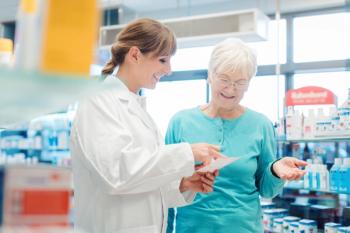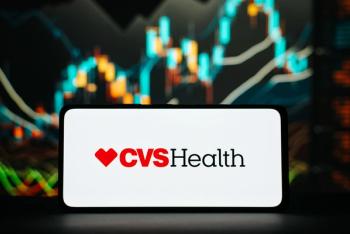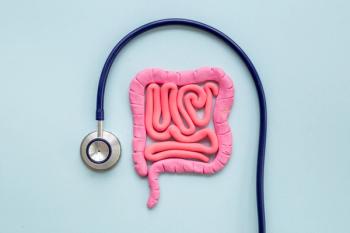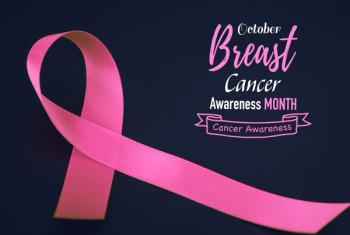
- Drug Topics April 2022
- Volume 166
- Issue 04
Public Health and Pharmacy Intersect, Providing Opportunities
Pharmacists are making waves in public health practice.
Throughout much of United States history—and certainly until the 1950s—the community drugstore served as a “primary gathering place–a hangout for school kids and a social center for adults—all drawn there by the sweet confections of the soda fountain,” reported the Chicago Tribune in 1985.1
The neighborhood pharmacy’s role as a gathering spot also firmly placed the pharmacist as the most accessible health care provider, explained Mitch Rothholz, RPh, chief of governance and state affiliates and executive director at the American Pharmacists Association (APhA). In fact, a 2022 study revealed patients go to their community pharmacies “almost twice as often as they visit their physicians or other [qualified health providers].”2
Pharmacists have helped community members with public health challenges throughout the history of the United States, Rothholz said. Some of the most pressing public health challenges today include chronic diseases, prescription drug overdoses, vaccine access, and cigarette smoking and vaping, per the American Public Health Association.3
Pharmacists around the country tackle these issues every day, said Rothholz, adding that pharmacists also help community members with prevention of sexually transmitted diseases, opioid substance use disorder, stroke prevention, and screenings for mental health.
In addition, over 400,000 pharmacists and over 100,000 pharmacy technicians are trained to administer vaccinations “across the life span,” Rothholz said. “Our limitations with [vaccinations are associated with] state laws and regulations and what payers are willing to pay.”
Pharmacists are already engaged in public health efforts when they’re testing patients for influenza, strep throat, or sexually transmitted diseases, or facilitating smoking cessation programs, he explained. However, the challenge is demonstrating the value of these services to health plans and getting employers to support these programs financially, Rothholz explained, adding that pharmacists are increasingly “getting outside the 4 walls of the pharmacy.”
Ensuring Community Pharmacists Could Administer the COVID-19 Vaccine
The ability for pharmacists to administer the COVID-19 vaccine was certainly helpful at the peak of the pandemic, which is soon projected to result in the deaths of 1 million US residents. As of February 9, the CDC reported that over 229.2 million doses of the COVID-19 vaccine were administered and by retail pharmacies across the country. There are 21 retail pharmacy partners in the program, according to the agency.4
As early as January 2021, community pharmacies in West Virginia helped boost COVID-19 vaccination rates. NPR reported that community pharmacies’ success in the state was because of long-standing relationships built with long-term care sites.5
Approximately 2400 miles away, in Delano, California, Komoto Pharmacy has administered over 11,000 COVID-19 vaccines since early 2021. But it was during the fall of 2020 that Brian Komoto, PharmD, president and CEO of Komoto Pharmacy, realized community pharmacists wouldn’t be able to administer the vaccine that would soon become available to adults across the state.
It took 3 months for Komoto to navigate and execute a pathway to work with the federal and state government to ensure community pharmacists could administer the COVID-19 vaccine. An important milestone in that journey was reached when California Governor Gavin Newsom issued an executive order that allowed pharmacists, pharmacy technicians, dentists, and nurses to administer the vaccine beginning January 27, 2021.6
Since then, Komoto Pharmacy has provided vaccinations at dozens of farms, 6 schools, and multiple vaccination sites located in nearby municipal gathering places across their agricultural community.
Earlier this year, APhA awarded Komoto the Daniel B. Smith Practice Excellence Award, in part because of his establishment of the Komoto Family Foundation, which is dedicated to promoting wellness and health equity in partnership with under-resourced communities.7 The foundation—which helps improves access to pharma- cist-provided health care services—has, according to APhA, saved patients over $3.7 million since it was founded in 2013.
Exposing Pharmacy Students to Public Health
Hoai-An Truong, PharmD, MPH, started volunteering in the public health field 20 years ago. Since then, he’s been involved in blood pressure screening and diabetes risk assessment, as well as being deployed by the Federal Emergency Management Agency (FEMA) at COVID-19 vaccine sites in both Norfolk, Virginia, and Las Cruces, New Mexico.
In May 2021, Truong was a volunteer vaccinator with 2 of his students at the University of Maryland Eastern Shore in Princess Anne, where he serves as a professor of pharmacy administration and public health. Vaccination sites in Norfolk and neighboring city, Hampton, Virginia, included churches, high schools, and jails.
“As members of the pharmacy profession, we contributed to the vaccine preparation, quality control,and administration of the 2-step [Pfiz- er-BioNTech] vaccine, as well as the single-dose counterpart produced by Johnson and Johnson,” wrote Truong, along with students Randi Wright and Michelle Yang, in an article published by the university.8
During their FEMA deployment, the trio spent their days tackling vaccine hesitancy and trypanophobia (fear of the needle) by “providing education and demonstrating compassion,” Truong, Wright, and Yang wrote.
Truong remembers a time when he was able to convince a COVID-19 vaccine-hesitant husband to accept the vaccine. “The husband and wife came together to get the vaccine [for the wife]. The husband came to be supportive, but he was ‘on the fence,’” he said.
Instead of lecturing the couple, Truong thanked them for getting vac- cinated and told them,“You’re doing this for your family, your community, and for me, as a health care professional. You’re protecting me and the rest of [your community].”
His advice for putting a patient at ease about the vaccine is straight-for- ward: Never prepare the vaccine vial in front of the patient, minimize theiranxiety, and distract them. One idea is to ask, “What are you doing for dinner tonight?” Truong said.
In addition to his teaching and public health activities, Truong wrote a book called The Pharmacist in Public Health: Education, Applications, and Opportunities, with coauthors James Bresette and Jill Sellers. Published
in 2010, the book covers topics such as the development and mission of pharmacy in the United States Public Health Service, medication therapy management as a way to improve public health, telehealth challenges and opportunities associated with public health pharmacy, and strate- gies and opportunities for students’ involvement in public health.9
What keeps Truong engaged in public health—particularly in the areas of disaster services and emer- gencies—is that “so much goes into planning,” he said. “If [the planning] is done well, it’s virtually never seen. What is seen are the people doing the work at the vaccination site or outside the home of a person who [has] just lost everything in a fire or a natural disaster.”
References
- Galloway P. Old-time drugstore just a soda fountain memory. Chicago Tribune.Published January 10, 1985. Accessed March 7, 2022.
https://www.chicagotribune.com/news/ct-xpm-1985-01-10-8501020847-story.html - Valliant SN, Burbage SC, Pathak S, Urick BY. Pharmacists as accessible health care providers: quantifying the opportunity. J Manag Care Spec Pharm.2022;28(1):85-90. doi:10.18553/jcmp.2022.28.1.85
- Topics and issues. American Public Health Association. Accessed March 7, 2022.
https://www.apha.org/topics-and-issues - The Federal Retail Pharmacy Program for COVID-19 vaccination. CDC. Updated March 7, 2022. Accessed March 7, 2022.
https://www.cdc.gov/vaccines/covid-19/retail-pharmacy-program/index.html - Noguchi Y. Why West Virginia’s winning the race to get COVID-19 vaccine into arms. NPR. Published January 7, 2021. Accessed March 7, 2022.
https://www.npr.org/sections/health-shots/2021/01/07/954409347/why-west-virginias-winning-the-race-to-get-covid-19-vaccine-into-arms - Executive Order N-02-21. Executive Department State of California. January 27, 2021. Accessed March 7, 2022.
https://www.gov.ca.gov/wp-content/uploads/2021/01/1.27.21-EO-N-02-21.pdf - Negatu J. American Pharmacists Association announces recipients of 2022 APhA Academy awards. December 7, 2021. Accessed March 7, 2022.
https://www.pharmacist.com/About/Newsroom/american-pharmacists-association-announces-recipients-of-2022-apha-academy-awards - Wright R, Yang M, Truong H. A FEMA-nominal experience. University of Maryland Eastern Shore. May 27, 2021. Accessed March 7, 2022.
https://wwwcp.umes.edu/pr/a-fema-nominal-experience/ - Truong H, Bresette JL, Sellers JA. The Pharmacist in Public Health: Education, Applications, and Opportunities. American Pharmacists Association; 2010.
Articles in this issue
over 3 years ago
Empty Nails Are the Cure for What Ailed Themover 3 years ago
Workforce Challenges for Health System Pharmacyover 3 years ago
Best Practices to Prevent Vaccination Errorsover 3 years ago
OTC Remedies Help With Oral Pain Managementover 3 years ago
Manage Your Stress for Your Best Healthalmost 4 years ago
OTC Update Reviews New Products, Recalls Since 2020Newsletter
Pharmacy practice is always changing. Stay ahead of the curve with the Drug Topics newsletter and get the latest drug information, industry trends, and patient care tips.

















































































































